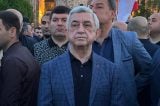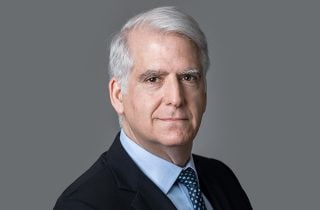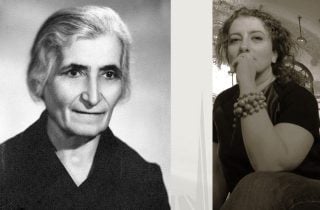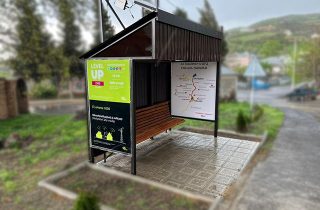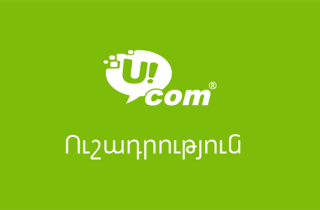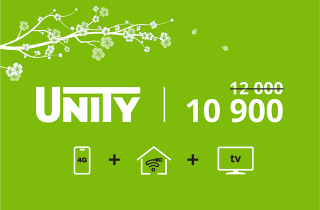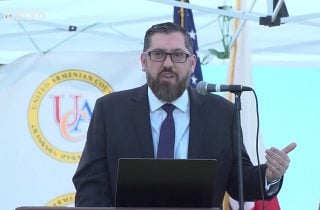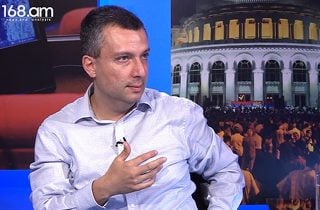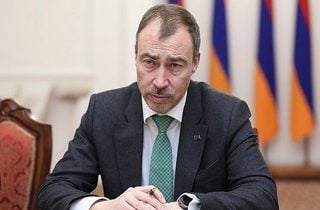Armenia now – 2016

Twelve months ago, we wrote about the role that Armenians around the world can and should play in the development of Armenia in our annual article “Armenia Now”. One year on, we would like to continue the thread, and turn this into an annual tradition, Repat Armenia reports. Each year, we will assess the key developments of the past year, and will bring together our views of what opportunities and challenges the future holds.
First, the geopolitical situation in Armenia’s neighborhood remains as tense as ever, with Russia venturing into Syria and creating a completely new configuration of forces on the ground, and increasing risks of conflagration with Turkey – albeit reducing recently after Russia announcing partial withdrawal. Turkey itself has seen an intensifying spiral of terror and internal strife, arguably the worst in its recent history, and peace is not yet in sight. Yet if we take a more holistic view of the region, we would also discern some positive trends, generally playing into Armenia’s advantage. The war in Ukraine has ceased, at least for the time being, and there are increasing signs that the protagonists are willing to negotiate a peaceful solution. ISIS, under heavy pressure from different angles, seems to be gradually retreating, both in Iraq and in Syria. Azerbaijan, our erstwhile rival, has been busy with its economy’s collapse and has toned down its war rhetoric, as well as hostile actions on the ground. And last but not the least, Iran’s nuclear deal and the lifting of sanctions, augurs new opportunities for Armenia, with the US and EU already making clear that they are interested in a stable and peaceful Armenia as a western gateway to Iran, an economy 50 times larger than Armenia, and set to grow fast once the sanctions are lifted. Armenia’s strategic position, both as a direct neighbor and one, which has harbored a positive relationship even during the years of sanctions, bodes well for the country if we focus efforts to nurture this opportunity. In particular, Armenia could serve as a liberal, open “home community” for western executives planning to spend significant time in Tehran.
Next, as we have gone through a Centennial year, we have learnt some important lessons. We have seen that the combined efforts of the Armenian state and Diaspora institutions can have a serious impact, not only on worldwide recognition of the Armenian Genocide, but also on buttressing the geopolitical significance of Armenia and Armenians. This can be clearly seen in the increasing recent overtures, both by Russia and by the US, towards Armenia – the first willing to see it as a key ally in its confrontation with Turkey, and the second trying to leverage it as an entry point to Iran. We have also learnt that while being firm on our demands to establish internal justice and eradicate corruption, we can also work with certain segments of the Armenian state, to pursue common objectives on international ground, as well as to strengthen the country’s security. We have understood that the questions of proper recognition, justice and reparations, if ever resolved, would be only because the Armenian state, supported by the broader Armenian world, would eventually become strong enough to bring Turkey to the negotiating table.
Finally, Armenia is going through a pivotal point in its own history. Last year was remarkable because of several developments. First, Armenia adopted a new constitution. While the constitutional referendum itself was marred by widespread voting irregularities and fraud, the outcome has paradoxically created a new political construct, in which power will be more distributed among different political factions, and politics itself in Armenia will become more competitive. Whether this will lead to more political transparency and responsibility, and will reduce political corruption, still remains to be seen – however, at least the structural prerequisites are there, and we see with the onset of 2016 some new political players emerging, and the authorities willing to cede some of their “political pie” to strengthen their weakened base of support.
Second, Armenia was largely able to withstand the blow emanating from the deep economic crisis in Russia – while during the previous crisis in 2009 the Armenian economy fell by a devastating 14%, this time it has moderately grown by 3%, despite the abrupt contraction of monetary transfers from Russia, and its currency performed the best within the broader region. Behind this counterintuitive outcome is the continued diversification of the Armenian economy, with many Armenian goods and services becoming more competitive, and the trade gradually being re-oriented towards more stable western markets. This is in deep contrast to both Russia and Azerbaijan, whose oil-based economies face long-term stagnation as oil is unlikely to climb back over $100/barrel in the foreseeable future.
Finally, we have seen the growing activity of civil society – from Electric Yerevan forcing authorities to start restructuring of the energy sector, to Tumo and Ayb rolling out modern educational centers throughout the country, Armenia has seen an onset of a new breed of players, which have become significant actors and stakeholders influencing the nation’s development agenda.
So, what does this mean for the continuing interaction between Armenians around the world and Armenia? How does the concept of repatriation, whether physical or through active engagement with the country, evolve in this increasingly complex context? Is it still time for Armenia Now?
As with the last year, we believe the answer is a resounding YES, and for an important set of reasons. While we cannot ignore the challenges facing our country and every individual living here, we also believe they represent opportunities for those willing to assume risks, and who have creative minds and spirits to capitalize on those opportunities.
First, Armenia is an economy in transition. As such, it does not possess the wealth of those countries which completed those transitions successfully, and consequently can afford much higher standards of living. We would therefore argue that today’s Armenia is not for those who are looking to improve their standard of living by landing a better paying job. In fact, many leave Armenia for better jobs elsewhere, and we can understand them. However, as with any country in transition, Armenia presents many interesting opportunities for new businesses. Other post-communist countries such as Estonia or Poland 20 years ago were economically much worse off than Armenia is now, yet their fast economic growth has created plenty of opportunities for risk-takers, and many of them made fortunes by starting early. Those who started in Armenia five-six years ago in the fields of winemaking, banking, IT and professional services, have already made their first fortunes, and in the process created a growing middle class enjoying higher standards of living. Similarly, those who are benefiting from the advent of new digital technologies, are starting ventures in Armenia as we write this piece. While there are still rent-seeking monopolistic behaviors in certain sectors of the economy, these seemingly do not impede the ability of anybody or any company to harness the value of information-based economies or to create new business opportunities.
Second, Armenia is increasingly educationally vibrant. The pioneering steps of AUA, Ayb and Tumo were followed by others, with new schools being created across the country (the most prominent one being UWC Dilijan), and existing schools and colleges modernizing their curricula and competing for students, including from abroad. The average educational standard in Armenia compares nicely with countries which are much higher in the economic league, and this is the most important resource for social and economic progress. Apart from the averages, Armenia is experimenting with new ways of educating its new generation, with chess and national dance becoming parts of compulsory curricula, math and science on the rise again, and Armenian children winning international Olympics in increasing numbers. More importantly, these children grow in a spirit of comradery and attachment to their own country, without fears of ethnic discrimination, violence or forced assimilation.
Third, while being surrounded by a turbulent neighborhood, Armenia is surprisingly safe internally. Yerevan has been ranked recently among the top ten safest cities in the world, and Armenia is by far is the safest country in its own region. The homicide and suicide rates in Armenia are 3 times lower than in the US, respectively, and the broader crime rate is 5 times lower. In the years following independence, Armenia has gradually developed a culture of greater tolerance, with violence being progressively viewed as socially unacceptable. While there is still a long way to go in this, progress can definitely be seen. On top of this safety comes the genuine hospitality and good spirit of the Armenian people, which have created a very friendly, welcoming atmosphere in the country, for tourists and newcomers.
Finally, for those who ever cherished the Armenian dream, the time has come to put minds and spirits into action. Armenia is on the tipping point of its political transformation. The generation of post-Soviet, often corrupt and self-oriented politicians is increasingly feeling the heat of a rising social tide. Armenia’s new “Independence” generation is becoming a force to recon with, and is more educated, civilized and socially active. It is looking for educated, professional and responsible political leadership, which would break with the past practice of pursuing narrow clannish interests, can formulate an inspiring vision for the country, and selflessly work to materialize that vision. Armenia has been reasonably open to incorporating leaders from the Diaspora into its political system, and it will likely become even more open now, with the transition to parliamentary governance.
We believe that Armenians possess a unique wealth of human qualities, which they can put to bear in any country, and they have proven this repeatedly. Whether in fertile land of California, bustling neighborhoods of Beirut, Isfahan, or Istanbul, vast spaces of Siberia, or modern office buildings of Manhattan, Armenians have built businesses, careers, fortunes and respect. They did this while silently bemoaning the lost homeland, and their lost dreams. Now, when at least part of the homeland has been recovered, it is time to stop moaning, time to put words into individual and collective action. It’s time to shift our focus and resources from trying to fix the injustices of the past to creating the opportunities for the future. If every ten patriotic Armenian families living in the Diaspora can support and encourage one among them to repatriate to Armenia, either physically or through active engagement, and that one can engage three promising and active locals in Armenia and help them to become successful, whether in business, politics, education, science or the arts, in a generation’s time we will change our country beyond recognition, and will turn it into a springboard for our success for many more generations to come.
So, the time for active engagement with Armenia is now, hence the continuing relevance of the title of this essay. We have done it ourselves, and over the last several years, have seen our footprint growing in the country, impact becoming more visible, and results more encouraging. Since we at Repat Armenia are in touch with and keep updated on most forward-looking initiatives in Armenia, we would be happy to guide every determined individual or group towards investment , employment, educational and volunteering opportunities in our country. For more information, please visit our website (www.repatarmenia.org), or contact us at [email protected]. We look forward to your engagement with Armenia Now.
Avetik Chalabyan
Raffi Kassarjian
Members of the Board, Repat Armenia Foundation
Yerevan, March
2016






